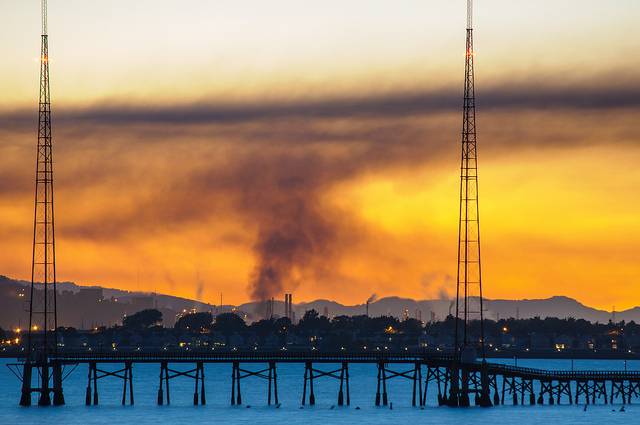APEN - The Laotian Organizing Project
Historical Essay
by students with Maribeth Côté and Marissa Friedman, July 2014
In 1991, the First National People of Color Environmental Leadership Summit in Washington DC brought together community leaders of color from across the country to discuss the issue of environmental racism. This event is considered to be an important early milestone for the emergence of the environmental justice (EJ) movement. Despite having 350 grassroots leaders from across the U.S. attend the conference, only a handful of organizers represented the Asian Pacific Islander (API) community. This small group of API delegates (many of which were from the SF Bay Area), recognized the lack of Asian representation at the Summit and came together to discuss the need to establish a network to represent API community interests in environmental issues.
Building upon this collaboration at the Summit, a small group of passionate Bay Area organizers set out to create the Asian Pacific Environmental Organization (APEN) in 1993. Over the next two decades, APEN would establish itself as one of the most respected and effective API-focused environmental justice organizations in the United States. APEN’s initial vision was to build a united network of grassroots organizations in API communities which focused on environmental justice issues within a larger multi-racial movement (Kong & Chiang, 2001, 3). According to founding member Francis Calpotura, APEN did not evolve in a traditional or “organic” sense. Instead of organizing in order to combat a specific problem, APEN started with theoretical frameworks and sought to find problems in the community that aligned to the organization’s ideology. They saw that base building was therefore a way for APEN to start “where people were at” in terms of engaging with people around the conditions of their daily lives. This approach led APEN to launch local organizing projects in Richmond and Oakland, California.
<iframe src="https://archive.org/embed/VivianChangAPEN1Min4Secs" width="500" height="30" frameborder="0" webkitallowfullscreen="true" mozallowfullscreen="true" allowfullscreen></iframe>
Vivian Chang, APEN Co-founder, discusses APEN's early efforts to organize community in May 2014
Located in West Contra Costa County, Richmond has long been recognized as a toxic “hot spot.” According to Maria Kong and Pamela Chiang, “Over 350 industrial facilities encircle Richmond, including hazardous waste incinerators, oil refineries (such as the Chevron plant, one of the major polluters in the San Francisco Bay Area), dry cleaners, pesticide, fertilizer, and other petroleum-based chemical manufacturers. Many of these industries closely neighbor schools and homes. According to a 1989 report by Communities for a Better Environment, at least 210 different hazardous chemicals are stored and/or released into the Richmond environment.In a pattern consistent with established findings about the disproportionate impact of environmental hazards on communities of color, it is mostly low-income African Americans, Latinos, and a growing but hidden population of Asians and Pacific Islanders who live in the heart of this toxic area. Among the most vulnerable are Laotians, who are further economically and politically marginalized due to their linguistic and cultural isolation and lack of access to information, services, and decision-makers as a refugee community" (Kong and Chiang, 2001). While APEN initially focused on small-scale initiatives targeting local problems such as lead paints, subsistence fishing, and toxics, the organization still envisioned creating a larger impact with greater community building and engagement. So in 1995, APEN formed the Laotian Organizing Project (LOP) with its primary mission to build political and activist capacity and leadership among adult Laotian refugees living in Richmond (LOP: 2005, 3).
Located in West Contra Costa County, Richmond has long been recognized as a toxic “hot spot.” According to Maria Kong and Pamela Chiang, “Over 350 industrial facilities encircle Richmond, including hazardous waste incinerators, oil refineries (such as the Chevron plant, one of the major polluters in the San Francisco Bay Area), dry cleaners, pesticide, fertilizer, and other petroleum-based chemical manufacturers. Many of these industries closely neighbor schools and homes. According to a 1989 report by Communities for a Better Environment, at least 210 different hazardous chemicals are stored and/or released into the Richmond environment.In a pattern consistent with established findings about the disproportionate impact of environmental hazards on communities of color, it is mostly low-income African Americans, Latinos, and a growing but hidden population of Asians and Pacific Islanders who live in the heart of this toxic area. Among the most vulnerable are Laotians, who are further economically and politically marginalized due to their linguistic and cultural isolation and lack of access to information, services, and decision-makers as a refugee community" (Kong and Chiang, 2001). While APEN initially focused on small-scale initiatives targeting local problems such as lead paints, subsistence fishing, and toxics, the organization still envisioned creating a larger impact with greater community building and engagement. So in 1995, APEN formed the Laotian Organizing Project (LOP) with its primary mission to build political and activist capacity and leadership among adult Laotian refugees living in Richmond (LOP: 2005, 3).
Photo: Michael Moore
Notes
“Developing Leadership and Political Capacity Among Laotian Refugees” Laotian Organizing Project. LOP, (2005): 1-5. Web.
Kong, Maria, and Pamela Chiang. Fighting Fire with Fire: Lessons for the Laotian Organizing Project's First Campaign. Rep. Oakland, California: LOP/APEN, 2001. Print.

